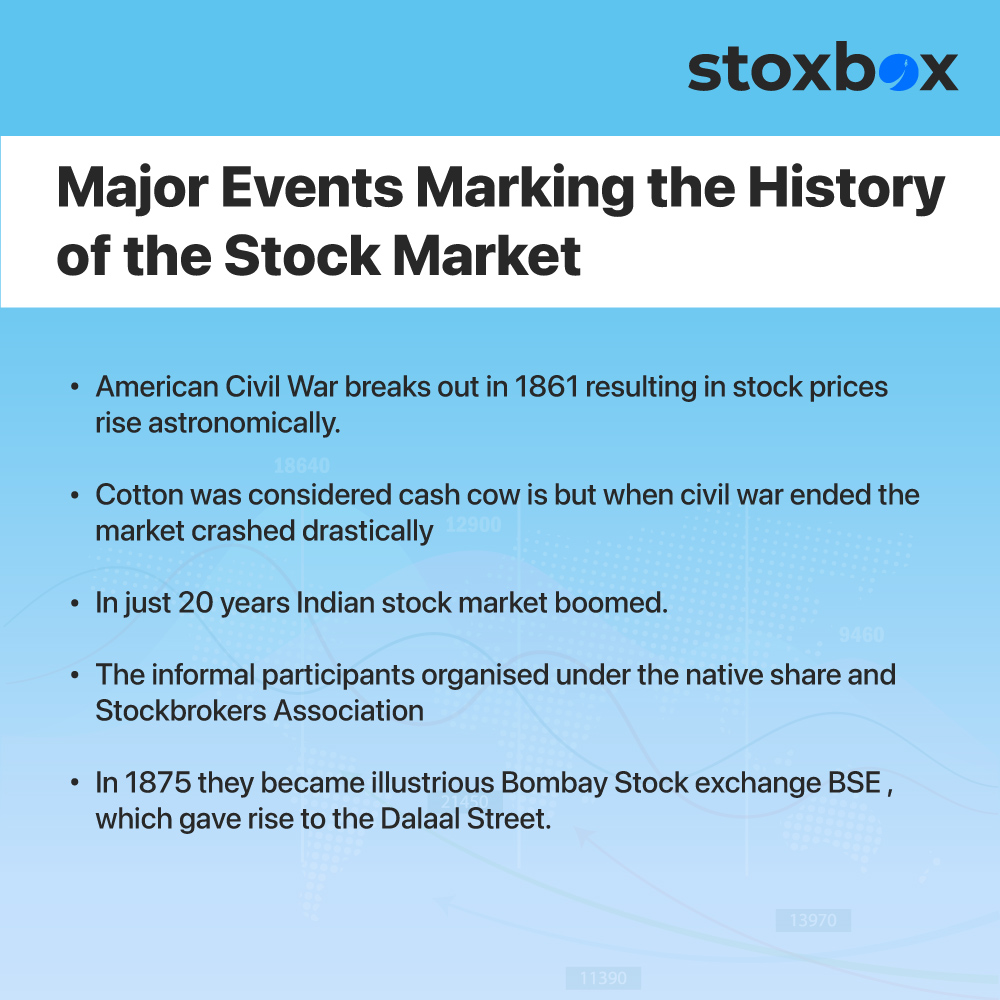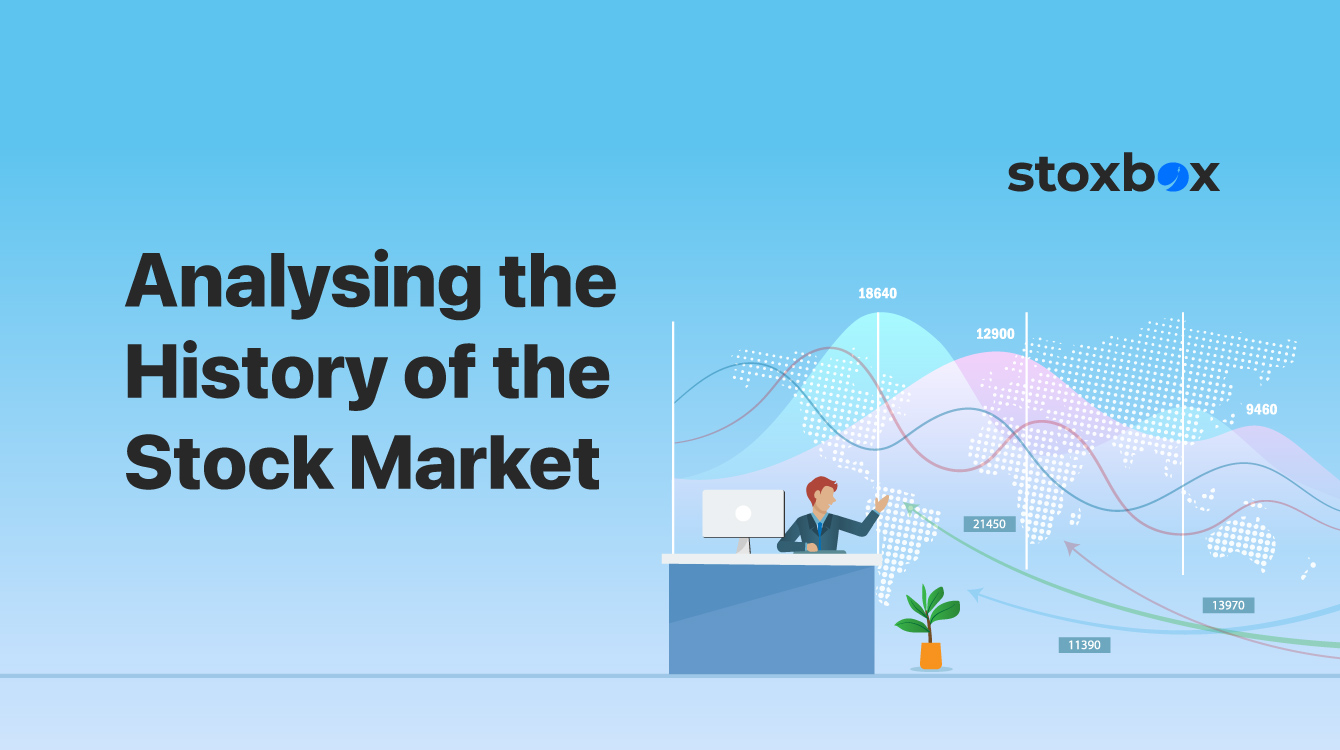Understand the emergence of stock market and its working
Table of Contents
Smart Investment An Analysis of Various Investment Objectives
For both first time investors and experienced stakeholders, the stock market is a place of allure and mystery. Dalal Street in Mumbai, which houses the stock exchanges, is a mystical place where people earn enormous profits and suffer tragic losses. But, despite the danger it poses, or maybe because of this very factor, the stock market has remained an appealing landscape for people across the country. Mumbai is the land of dreams and nowhere can your dreams take flight as amazingly as at the stock market. If you are curious about the tale of this mysterious land, let us take a look at the long and chequered history of the stock market.
When you look at the landscape of Dalal Street, nestled unassumingly in the bylanes of South Bombay, you are unlikely to find the glitter and glamour ubiquitous in America’s Wall Street. But, do not be fooled by the unassuming air, Dalal Street is the place where millions of dreams are envisioned and realised, or wiped out, on a daily basis. If you look around yourself, you will find yourself surrounded by history and tales of yore, with the old-world charm interspersed with the pedestrian. You will be privy to the majestic building housing the State Bank of India featuring bold Roman numerals, as well as a number of Udupi restaurants catering to the hungry and weary who trudge Dalal Street every day, making it a land where the ephemeral mingles with the ever-lasting to create a symphony powered by the richest melody – the sound of money.

Mumbai is a land of the fast-paced, and Dalal Street is even more so. You will find a variety of people here – some rushing through their daily chores while others discussing important financial events and stock movements. Then there is the electronic ticker, which makes its inexorable journey from 9:15 am to 3:30 pm, every day between Monday and Friday and the curved BSE building or, in layman terms, the stock exchange. So, what is the history of the stock market which has managed to capture people’s fancy on such a grand scale?
History of the Stock Market
India has, long since, been the land of intrepid investors and people eager to try their luck at realising unprecedented gains. With an enterprising mindset and the willingness to take on enormous risk, the Indian stock market has its origin in the 19th century, making it one of the oldest surviving markets in Asia and the world. Stock market emerged from the trading of yore, with merchants keen on starting large scale ventures aimed at diverting money to fledgling opportunities. However, such a venture was no small task – it required a humongous amount of capital and a temperament willing to take risks in the quest of unimaginable riches. This is when such intrepid merchants landed upon a brilliant idea – pool their money and win the prize together. This led to business partnerships and co-ownership of individual shares, further diversifying into joint-stock companies. The history here dates back to 1602, when the Dutch East India Co. issued the first paper shares. These shares allowed investors to effectively buy, sell, and trade their assets with other shareholders and investors, creating the blueprint for the stock market as we know it today.
It was in the 1830s that Indian corporate stocks and shares of banks and cotton press began active trading in the city then known as Bombay. While it had a slow beginning, with just about six brokers initiating activities over the next two decades, the year 1850 was a landmark which witnessed an unofficial group of 22 stockbrokers start trading under a banyan tree opposite Bombay’s town hall. The activity started with 1 rupee, an amount paltry today but princely in those days.
Major Events Marking the History of the Stock Market
With the American Civil War breaking out in 1861, share prices of even the smallest companies began to rise astronomically. For instance, the Back Bay Reclamation share, which had a face value of Rs 5,000, surged 10 times to trade at Rs 50,000, and a single share of the Bank of Bombay reached Rs 2,850, from a face value of Rs. 500, indicating the enormous appeal of the share market. With humongous profits to be made, people rushed to the market and caused a spike in the number of brokers catering to these investors. Cotton was considered the cash cow but, when the Civil War ended in 1865, this unnatural demand fell significantly, triggering the first market crash. In just a matter of 20 years, the Indian stock market had moved through its first boom and subsequent bust, indicating the need for a formalised presence.
The informal participants organised themselves under the Native Share and Stockbrokers Association and, in 1875, became known as the illustrious Bombay Stock Exchange (BSE). It was originally housed in an old building by the town hall and later came to occupy its current position on Dalal Street, imbuing the road with history and acclaim. While the market, as we know it today, has undergone several booms and busts, there is no downplaying the amazing history of the stock market
Your Wealth-Building Journey Starts Here

You might also Like.
No posts found!
